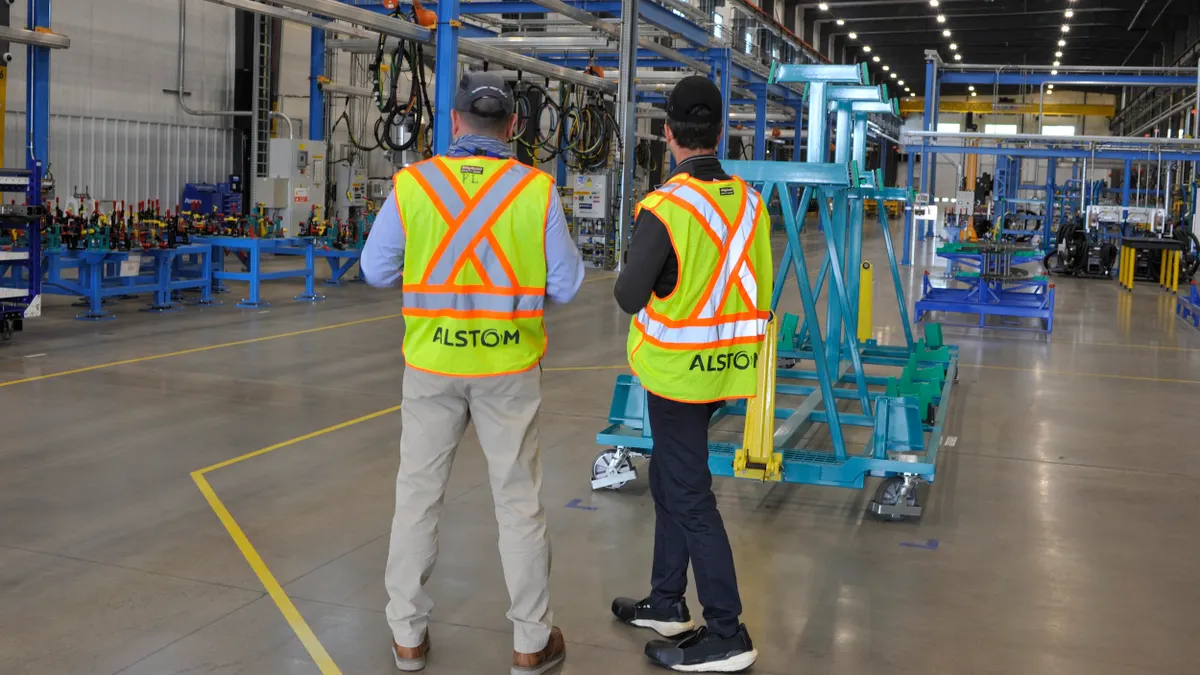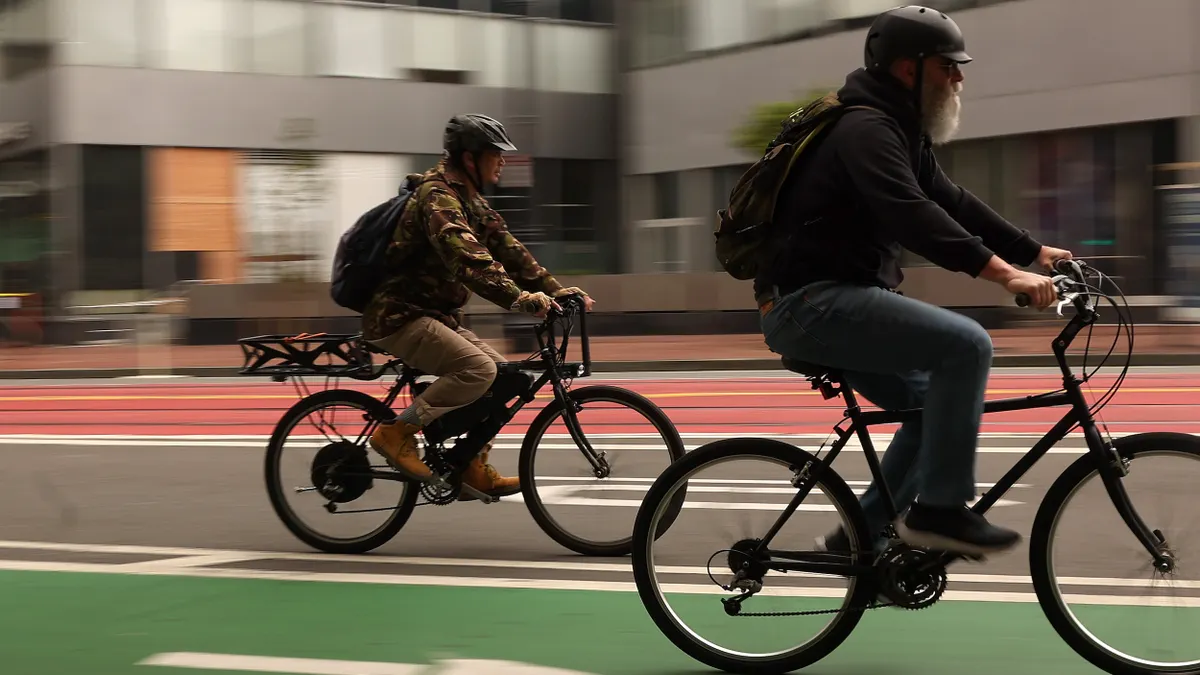Editor's Note: The following is a guest post from Scott Rushforth, chief vehicle officer at Bird.
There’s a reason swappable batteries haven’t yet become the norm in the shared e-scooter industry.
On the surface, it may seem as though they present a simple solution to complex micromobility operations. Instead of transporting entire scooters to be recharged, fresh batteries can be popped in and out of a vehicle, cutting back on lost time, lost revenue and costly service trips. Or at least that’s the idea.
The truth is that the road from promise to reality is long, and much like swappable electric car batteries, current swappable e-scooter batteries have yet to prove themselves as a secure, environmentally-friendly solution. More importantly, they come with significant safety and sustainability risks that must be taken seriously. It’s notable that the only two micromobility operators that engineer their own vehicles have chosen not to rush into swappable tech until it’s 100% safe.
In order for the technology to live up to its environmentally-friendly potential and safely justify widespread adoption, there are critical tests that swappables will have to pass in the coming years. These are just a few of them.
The safety test
It’s a general rule of engineering that the fewer moving parts there are, the fewer opportunities there are for friction, damage and risk. The same principle applies to battery technology.
Every time a rider or staff member manipulates a scooter’s battery, there are multiple opportunities for damage to occur both to the vehicle and to the battery pack. Drops, mishandling and exposure to the elements and poor storage conditions are not only possible hazards; they’re reasonably expected outcomes based on what we know of human error and the rugged realities of micromobility. Each accidental bump, jostle and collision compromises the integrity of the battery casing and increases the likelihood of premature failure.
This kind of battery failure is more than just an environmental concern. Lithium ion batteries are an energy-dense power source that rely on stable conditions in order to function safely. Damaged cells, faulty connectors, compromised casings and water and dust intrusion can have dangerous real-life consequences. Serious safety considerations such as these must be taken into account when weighing the merits of integrated batteries—with reinforced enclosures and IP-rated waterproofing—against their swappable counterparts.
When designing an electric vehicle (EV), battery safety needs to be the top priority, and swappable batteries significantly increase the safety risks.
The tamper test
Vandalism and theft are an unfortunate reality of the shared micromobility industry. As time has gone on, however, some operators have reduced or nearly eliminated such behavior for the good of both the community and the industry.
Because batteries are often a target of theft, our team has designed reinforced enclosures that require special tools to open. This makes unauthorized access extremely challenging for would-be vandals, and it helps keep our fully-waterproof batteries even more protected in the event a scooter becomes submerged.
Shared scooters with quick-release baseboards or grab-and-go battery slots, however, offer no such protection. These vehicles are, by design, built to give easy access to their batteries in order to facilitate an efficient swapping process. This is a potentially serious problem, and the data on battery protection from theft and vandalism will need to be clear, copious and convincing before any industry-wide push for adoption can reasonably be enacted.
The environmental test
Battery production is one of the most carbon-intensive parts of e-scooter manufacturing, which in turn contributes the most carbon to a scooter’s overall lifetime emissions. Proper disposal and recycling present an environmental challenge, meaning that the fewer batteries produced overall, the better. And while it’s easy to think that no matter which model you use, one scooter built equals one battery manufactured, that’s actually not the case.
E-scooter operators using current swappable technology require around 1.5 battery packs per vehicle. That’s because, for every fleet of scooters in service, a given number of additional batteries must be simultaneously charging in order for the system to operate efficiently. Conservative estimates indicate that a fleet of 50,000 vehicles requires as many as 75,000 batteries to be manufactured. The actual number is likely higher for reasons discussed above.
Some scooter companies, on the other hand, have vehicles that are equipped with integrated, waterproof (IP67 or IP68), high-capacity batteries with a 50% extended range enabling each one to be paired with multiple chassis frames during its lifespan. This means that less than one battery is required per scooter, dramatically reducing each vehicle’s total lifetime emissions long before the first ride is ever taken.
In summary
It helps to look at the discussion in the broader context of other swappable battery devices. In the case of smartphones, consumer-swappable batteries were abandoned by manufacturers in order to improve design and, critically, allow for increased water resistance. For electric cars, rapid increases in battery duration and charging speeds caused Tesla to abandon swappables. Today, 12 years after the first Roadster was released, the question remains open and industry-wide consensus on swappables isn’t close to being reached.
Similarly, data surrounding the safety, sustainability and viability of swappable-battery e-scooters is far from conclusive. For all their promise, they remain unproven and so must be approached objectively and with deliberation. According to a recent OECD-ITF report: "The actual impact of battery swapping on energy and GHG emissions/pkm depends on the details of how it is designed and implemented... For example, swappable batteries can be targeted for theft and may be subject to a higher risk of damages related with their handling processes or water infiltration."
It's imperative to prioritize safety above all else, and to continue to investigate and test swappables as we’ve done with all new innovations: with the well-being of riders, communities and the environment front and center. As long as emerging technologies offer the potential for more efficient operations and cleaner, healthier cities, our team will remain on the cutting edge of the research necessary to implement them safely and responsibly.

















